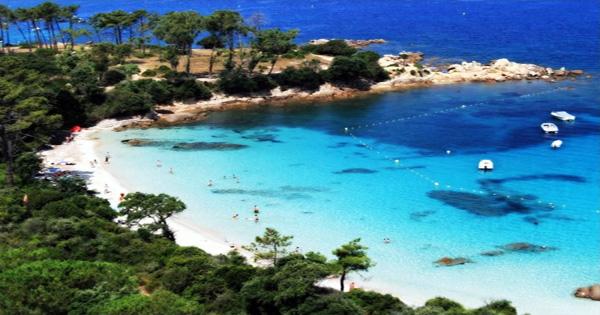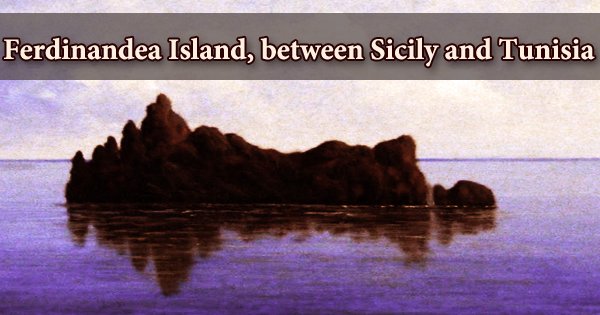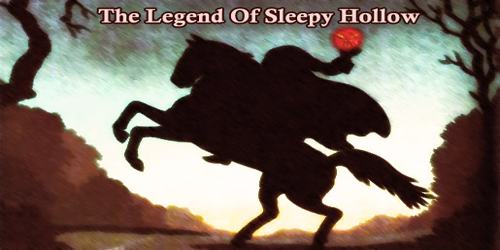Corsica (/ˈkɔːrsɪkə/; French: Corse, French: kɔʁs; Corsica in Corsican and Italian, pronounced (ˈkorsiɡa) and (ˈkɔrsika) respectively), official name Collectivité Territoriale de Corse, collectivité territoriale (territorial collectivity) of France and the Mediterranean Sea island of the Haute-Corse and Corse-du-Sud departments (from 1976). It is situated south-east of the French mainland, west of the Italian Peninsula, and north of the Italian island of Sardinia, the closest landmass to it. Two-thirds of the island is created by a single chain of mountains. In the Mediterranean, Corsica is the fourth largest island (after Sicily, Sardinia, and Cyprus).
With its scenery, temples, and beautiful beaches, Corsica is almost in the middle of the Mediterranean Sea, making this island a perfect destination for walking on the GR20, relaxing, and experiencing the ancient history and customs associated with the Corsican way of life. The island is France’s territorial collectivity. Ajaccio is the municipal capitol. While Corsica is still commonly defined as one of metropolitan France’s 22 regions, its official status was changed in 1991 from région to collectivité territoriale à statut particulier (territorial collectivity with special status).

Ajaccio, Corsica, France
The root of the Corsica name is subject to a great deal of controversy and remains a mystery. It was known to the Ancient Greeks as Kalliste, Corsis, Cyrnos, Cernealis, or Cirné. The landscape of Corsica is mountainous for the most part. Around two-thirds of it consists of an ancient crystalline massif on the northwest-to-southeast axis that separates the island. There were many martyrs and saints in Corsica, the most famous of which were Saint Devota and Saint Julia, both patrons of the island. The island was integrated into Roman Italy by Emperor Diocletian (r. 284–305).
Corsica has a cluster of 20 peaks that reach 2,000 meters (6,500 feet). The island is 183 km (114 mi) long at its longest, 83 km (52 mi) wide at its widest, and more than 200 beaches have a coastline of 1,000 km (620 mi). Mountains, forming a continuous chain, compose two-thirds of the island. 20 percent of the island is made up of woods. Mount Cinto reaches an altitude of 2,710 meters (8,890 feet). The silhouettes of the mountains are very dramatic, and bright colors are reflected on their granite rocks. In parallel ranges to the west, the mountains descend steeply, where the coast is cut into steep gulfs and marked by high cliffs and headlands.
Two-thirds of the surface of this beautiful protected area, which also boasts 5 nature reserves and marine parks, is covered by the Natural Regional Park of Corsica. At the Gorges Restonica, Monte Stello, and Bonifacio Cliffs, all the natural splendors of Corsica are exposed. Of the total surface area of 8,680 km2 (3,350 sq mi), approximately 3,500 km2 (1,400 sq mi) is devoted to nature reserves (Parc Naturel régional de Corse), primarily inland. Corsica is home to the GR20, one of the most prominent hiking trails in Europe. A separate and less-spectacular mountain formation hits heights of no more than 5,790 feet (1,765 meters) in the northeast.

Beach view at Ajaccio, Corsica
The island is 90 km (56 mi) from Italy’s Tuscany and 170 km (110 mi) from France’s Cote d’Azur. It is separated by the Bonifacio Strait, which is at least 11 km (6.8 mi) deep, from Sardinia to the south. The Golo, Tavignano, Liamone, Granove, Tarova, and Profiano are the principal rivers of the island. On the coasts, the Mediterranean climate prevails, where the average temperature in winter is 51 ° F (10.5 °C) and 60 °F (15.5 °C) during the rest of the year. At higher elevations, it is colder. In the southern coastal city of Ajaccio, the average summer temperature is 70 °F (21 °C). Precipitation is plentiful, averaging 35 inches (880 mm) a year, while considerably more is received from higher elevations.
In Corsica, there is significant birdlife. The bearded vulture is one famous case. Corsica is a delimited member of the distribution of species in some situations. Corvus cornix ssp cornix, a subspecies of hooded crow, occurs in Corsica, for example, but no further south. Corsica has its own cuisine, a very individual one. Polenta from chestnut flour or garnished soups can be added to the different cold meats (coppa, lonzu, prisuttu, figatellu). With local herbs, including origano, marjoram, and mint, fish and seafood are accentuated. In Corsica, honey is another significant commodity.
The flora of Corsica is luxuriant. Most of the island, along with holm oak and cork oak in the south, is covered with scrubby underbrush, or maquis, which is composed of aromatic shrubs. Most of Corsica’s foreign immigrants come from the Maghreb (particularly Moroccans, who made up 33.5% of all Corsican immigrants in the 2011 census) and from Southern Europe (particularly Portuguese, 22.7% of the island’s immigrants) and Italians (13.7%). The economic life of the island is mainly based on tourism and the raising of sheep for ewe’s milk, which is used for the processing of fine-quality cheeses, and the cultivation of citrus fruits, grapes (often with irrigation aid), and olives.
Information Sources:
















